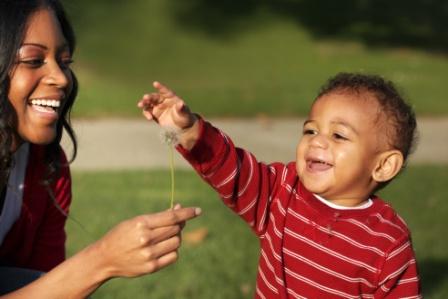Every parent faces behaviour problems with their toddler. Sometimes the behaviour is isolated – like when little Johnny vandalizes the freshly painted dining room walls with his Crayola-weapon-of-choice.
But other times, the behaviour problem manifests itself because there are two children present, and one gets bored. This is exactly what happened to me yesterday.
It all began in the kitchen. We had come home from the shopping mall, where my two girls got a lot of attention from us. Now that we were home, my wife and I were engaged in some conversation while preparing some food. The girls were sitting at the counter on stools, having a snack and listening.
Anne, my eldest daughter, was getting bored. She started to point, harmlessly but annoyingly, at Elizabeth, my younger daughter. This caused Elizabeth to start whining and complaining about her sister. Of course, I’m sure Anne felt there was nothing “wrong” with her behaviour. After all she was just pointing, right? Sure. We all know better. She was doing it to get a rise out of her sister, and it was working.
It was turning snack time into fight time. No fun.
When I noticed this I did not want to ruin the fun afternoon we’d been having by scolding Anne, and siding with little Elizabeth. Without really thinking about it, I launched into one of my favourite tools: distraction.
The Goal of Distraction
Before I tell you exactly what I did, let’s think about the goal here. All I needed to accomplish was to distract both of the kids from what they were doing, and lead them into something else. That solves the problem nine times out of 10.
Usually when I use distraction, I do it with silliness or games. This stems from what my wife would say is my “natural tendency to act like a child.” Ok. She’s right. But it works for me and it can work for you too. Or just do whatever works for you.
So let’s get back to our story. Elizabeth is whining, and Anne is pointing at her. I instantly turned on my “game” voice. I said to them, “Girls – everyone point at the youngest sister!”
They responded. Anne kept pointing, but Elizabeth pointed to herself. The whining turned into a subtle smile. The game went on like this for about one or two minutes.
“Point at the best Mommy”
“Point at the girl who’s name starts with A”
“Ok good job. Point at the oldest person in the family”
It only took about 10 seconds before the prior embers of a fight had been doused in a firehouse of entertainment. But it’s always good to keep the fun going just a bit longer, to be 100% sure you’ve distracted your kids from the prior problem.
When I wanted to end our little game, I just asked the girls to make sure they finished their snacks before putting their dishes in the sink. They kept playing the game on their own for a bit – and this time Anne was playing with her sister, not trying to annoy her. They were pointing at trees outside, toys in the living room, and all sorts of other things.
Now it’s Your Turn
My challenge for you is simple. Find ways to use distraction to your advantage. Notice what works and what doesn’t. Refine your techniques. Think outside of the box. Allow yourself to be flexible enough to do things other than the usual – which is to yell at your kids and verbally assault them into submission.
About the Author: Chris Thompson is the owner of TalkingToToddlers.com. He wrote and recorded the “Talking to Toddlers” audio course that has become an international best seller in the category of toddler parenting audio books. It is the number one ranked toddler parenting course in the world (as rated by clickbank.com).
Latest posts by Contributor (see all)
- Choose the right baby wash for your baby - August 22, 2014
- Dear pre-baby me, here’s what you need to know - August 22, 2014
- Video: When toddlers play they learn skills for life - August 21, 2014
-
No Comments" href="https://all4baby.co.za/toddlers-1-2-years/learning-development-1-2-years/1774/video-toddlers-play-learn-skills-life/">

Video: When toddlers play they learn skills for life
-
No Comments" href="https://all4baby.co.za/toddlers-1-2-years/parenting-a-toddler/1768/terrible-twos/">

The not so terrible twos
-
No Comments" href="https://all4baby.co.za/toddlers-1-2-years/toddler-issues/1742/deal-toddler-wetting-bed/">

How to deal with your toddler wetting the bed
-
No Comments" href="https://all4baby.co.za/toddlers-1-2-years/creche-childcare/1711/heling-toddler-adjust-creche/">

Help your toddler adjust to crèche


 Saving...
Saving...